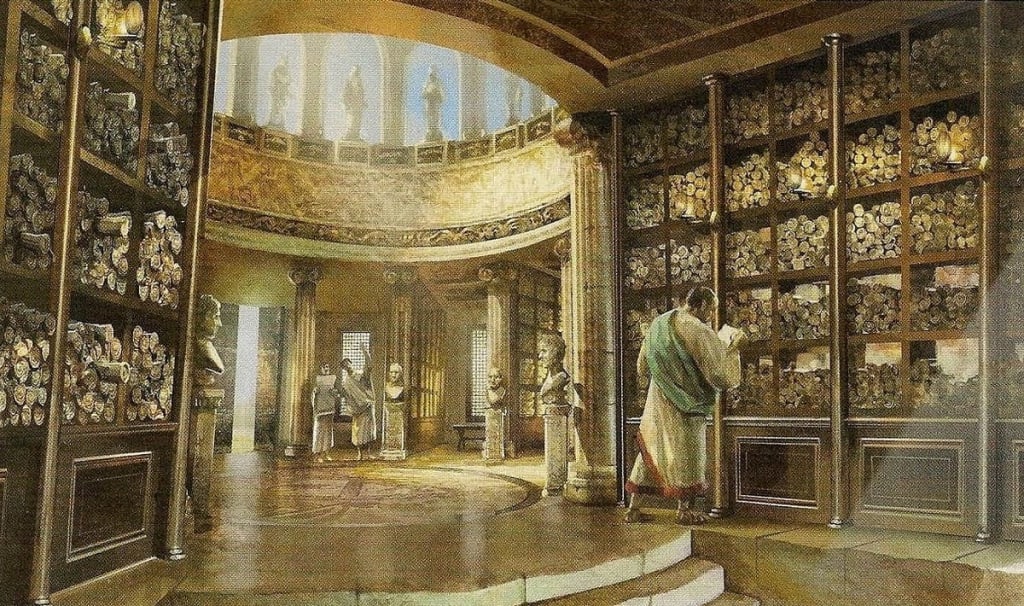
Evolving Mythologies and Depth Psychology
The hero’s journey is one of the most enduring archetypes in world mythology, a narrative pattern that has shaped stories across cultures and centuries. At its core, the hero’s journey is a psychological one—a symbolic representation of the process of individuation, the development of the self through the integration of conscious and unconscious elements. By tracing this archetype through the evolution of ancient mythology, particularly in the Greek tradition, we can gain a deeper understanding not only of these timeless stories but of the human psyche itself.
The Origins of the Hero’s Journey
The roots of the hero’s journey can be traced back to the earliest surviving works of literature, such as the Sumerian Epic of Gilgamesh. This ancient tale, which predates Homer by centuries, follows the adventures of the titular king of Uruk as he battles monsters, seeks the secret of immortality, and grapples with the meaning of life in the face of death.
Gilgamesh’s story contains many of the key elements that would come to define the hero’s journey in later mythologies. There is the call to adventure, as Gilgamesh leaves the safety of his city to explore the wild edges of the world. There are the trials and challenges he must face, from the monstrous Humbaba to the Bull of Heaven. There is the descent into the underworld, as Gilgamesh seeks out Utnapishtim, the survivor of the Great Flood, to learn the secret of eternal life.
And there is, ultimately, the hero’s transformation and return, as Gilgamesh, having failed to achieve literal immortality, comes to accept his mortality and dedicates himself to living a good life and ruling his city wisely. In this sense, Gilgamesh’s journey is not just a physical one but a psychological and spiritual one—a quest for self-knowledge and meaning in the face of the ultimate shadow, death itself.
Mythologies Across Cultures
While the hero’s journey is perhaps most famously associated with Greek mythology, it is a truly universal archetype that appears in mythological traditions around the world. By examining how this pattern manifests in different cultures, we can gain insight into both the shared experiences of humanity and the unique ways in which different societies have made sense of the world.

Norse Mythology
In Norse mythology, we find the story of Odin, the chief of the gods, who sacrifices himself on the World Tree Yggdrasil in order to gain the wisdom of the runes. This is a powerful example of the hero’s journey as a quest for knowledge and self-transformation, even at great personal cost.
The Norse myths also give us the figure of Thor, the god of thunder, whose heroic adventures often involve journeying to the edges of the world to battle giants and monsters. These stories can be seen as symbolic of the ego’s struggle to establish itself against the overwhelming forces of the unconscious.
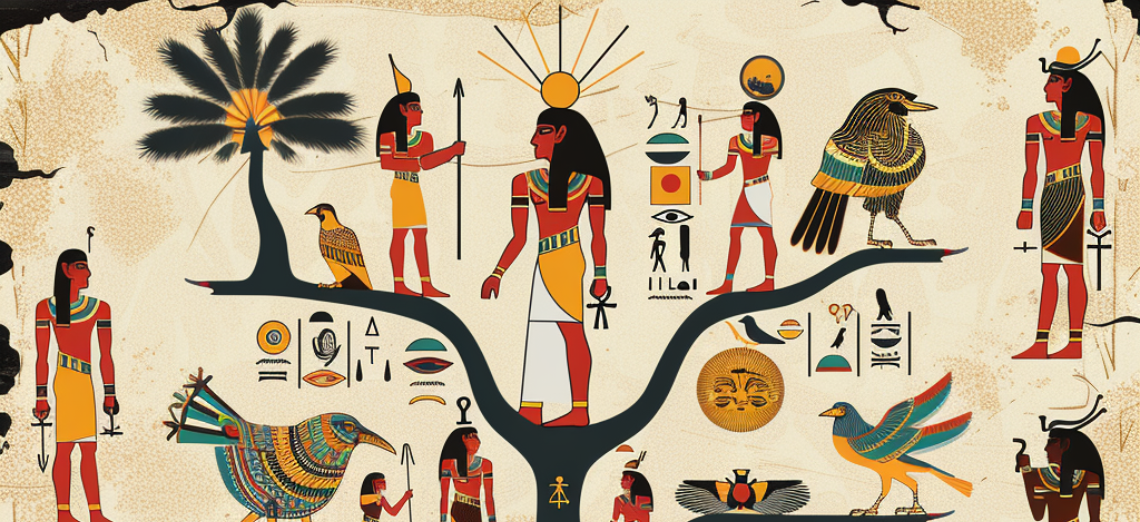
Egyptian Mythology
Egyptian mythology is rich with heroic figures, from the sun god Ra who battles the forces of chaos each night to ensure the rising of the sun, to Osiris, the god of the underworld who is killed and dismembered by his brother Set but is ultimately resurrected.
These myths often center on the theme of order versus chaos, with the hero acting as a mediator between these two forces. This can be seen as a metaphor for the ego’s role in integrating the conscious and unconscious aspects of the psyche.
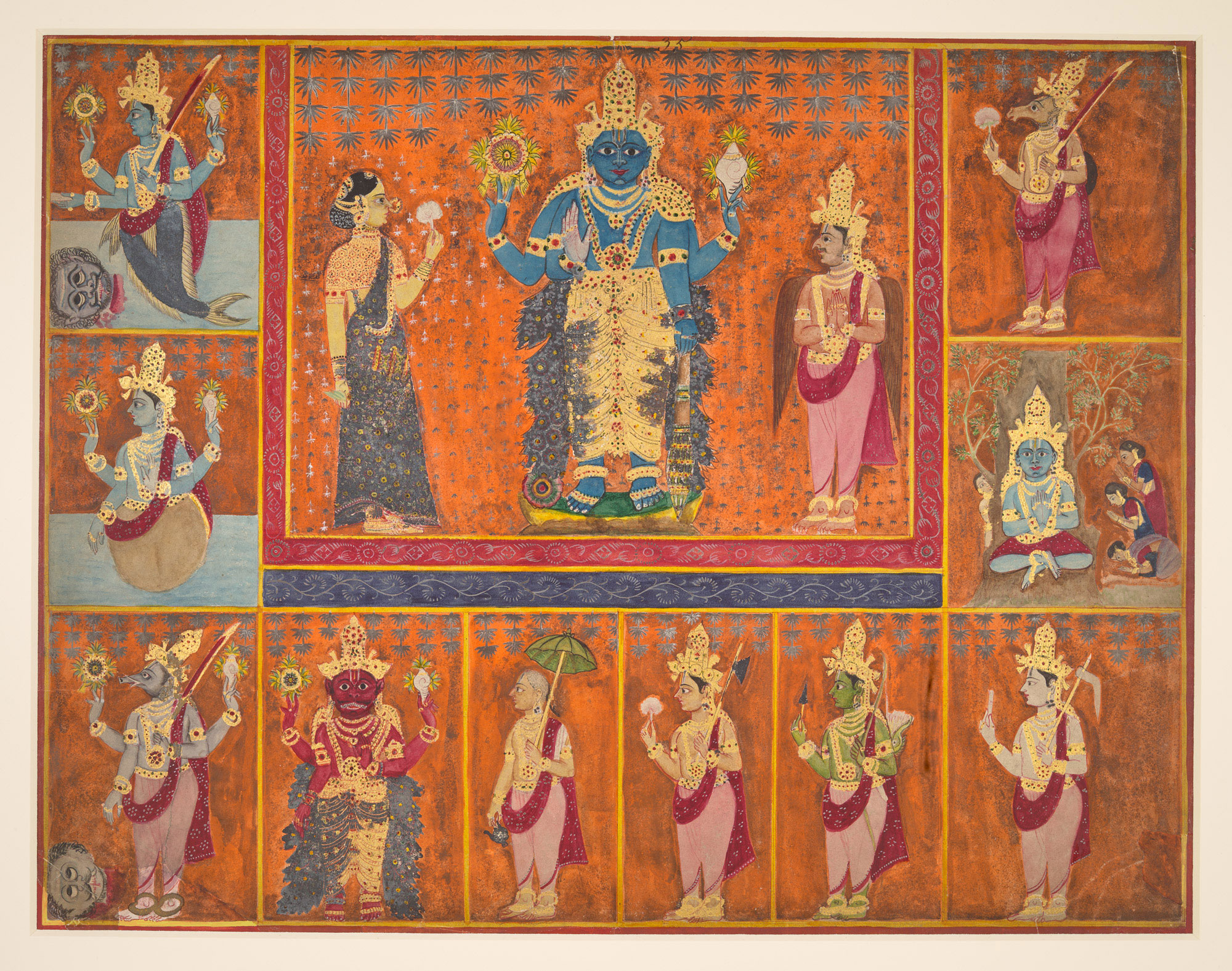
Hindu Mythology
In Hindu mythology, the hero’s journey takes on a more explicitly spiritual and philosophical dimension. The great epics, such as the Mahabharata and the Ramayana, are not just stories of heroic adventures but allegories of the soul’s journey towards enlightenment.
Figures like Arjuna in the Bhagavad Gita, who must overcome his own doubts and attachments in order to fulfill his dharma, or Krishna, the avatar of Vishnu who guides and counsels the hero, represent different aspects of the self and the process of spiritual awakening.
The Hero’s Journey as Depth Psychology

The idea of the hero’s journey as a psychological and spiritual quest was perhaps most famously articulated by the mythologist Joseph Campbell in his book “The Hero with a Thousand Faces”. Campbell drew heavily on the work of Carl Jung, the founder of analytical psychology, who saw myths as expressions of the collective unconscious.
Jung believed that the process of individuation, of becoming a whole and integrated self, requires a confrontation with the shadow, the dark and repressed aspects of the personality. The hero’s journey, with its themes of trial, transformation, and return, can be seen as a symbolic representation of this process.
Insights from Joseph Campbell
In his extensive studies of world mythology, Campbell identified several key stages of the hero’s journey that recur across cultures.
The Heroes Journey:
The Call to Adventure:
The hero is summoned away from the ordinary world into a realm of supernatural wonder.
The Road of Trials:
The hero faces a series of challenges and obstacles, often with the help of divine aid or supernatural allies.
The Ultimate Boon:
The hero achieves the goal of the quest, often obtaining some elixir or treasure that has the power to transform the world.
The Return and Reintegration with Society:
The hero must return with this boon and use it to benefit the community.
Campbell saw these stages not just as elements of a good story, but as a map of the psyche and the process of self-discovery. By understanding the hero’s journey, we can better understand our own psychological journeys.
Applying Mythology in Therapy
The insights of depth psychology and the study of mythology have profound implications for therapeutic practice. By understanding the archetypal patterns that shape our lives, therapists can help clients make sense of their own journeys and find meaning in their struggles.
Myths can serve as powerful mirrors for the psyche, helping individuals to recognize and integrate the different aspects of themselves. They can provide a language for exploring the unconscious and a framework for understanding the process of growth and transformation.
In particular, the hero’s journey can be a valuable tool for helping clients navigate transitions and crises. By seeing their own challenges in the context of a larger, mythic narrative, individuals can find the strength and wisdom to persevere and emerge transformed.
Ritual and Therapy
Another way in which the insights of mythology can be applied in a therapeutic context is through the use of ritual. In many traditional cultures, rituals serve as a way of enacting and embodying mythic truths, of connecting the individual to the larger patterns of the universe.
In a therapeutic setting, rituals can be used to mark important transitions, to symbolically enact the process of letting go and moving on, or to affirm the client’s place in the larger web of life. By creating a sacred space and a sense of intentionality, rituals can help individuals access deeper levels of awareness and effect profound psychological shifts.
Homeric Epic and the Greek Hero
The influence of earlier mythologies on the development of the Greek heroic tradition is clear, particularly in the works of Homer. The Iliad and the Odyssey, the foundational texts of Greek literature, draw on many of the same narrative patterns and archetypal figures found in myths like the Epic of Gilgamesh. Yet in the hands of the Greek bards, the hero’s journey takes on new dimensions and complexities.
The Psychology of Achilles
One of the key innovations of Greek epic is the emphasis on the hero as an individual, with a unique personality and psychology. Unlike the more archetypal figures of earlier mythologies, heroes like Achilles and Odysseus are vividly realized characters, with their own strengths, weaknesses, and inner conflicts.
This psychological depth is particularly evident in the Iliad, which centers on Achilles’ struggle between his desire for glory and his disillusionment with the Trojan War. The famous scene in which Achilles is presented with new armor by his mother Thetis is a case in point. The shield forged by Hephaestus is adorned with scenes of everyday life—weddings, harvests, legal disputes—all the elements of the human world that Achilles has abandoned in his pursuit of heroic fame.
This juxtaposition underscores the central tragedy of Achilles’ journey. In choosing the path of the warrior, he has cut himself off from the joys and sorrows of ordinary human experience. His heroism comes at the cost of his humanity, a theme that would be explored in ever-greater depth by later Greek poets.
Odysseus as Trickster
If the Iliad represents the apotheosis of the martial hero, the Odyssey presents a different kind of heroic journey, one that subverts and complicates many of the established tropes. Odysseus, the “man of many turns,” is a far cry from the straightforward warrior-hero embodied by Achilles. He is a trickster figure, relying on his wits and cunning to navigate the challenges of his journey home to Ithaca.
Throughout the epic, Odysseus demonstrates the classic traits of the trickster archetype. He is a master of disguise and deception, able to adapt his identity to suit his needs. He is an expert in the art of storytelling, spinning tales within tales to achieve his goals. And he is not above using underhanded tactics, as in his famous scheme of the Trojan Horse or his blinding of the Cyclops Polyphemus.
Yet Odysseus’ trickery is not merely a matter of expediency. It is a fundamental aspect of his heroic identity. In a world governed by the often capricious wills of the gods, where force alone is not enough to ensure survival, Odysseus’ flexibility and ingenuity become the key to his success. His journey is not a straight path of conquest but a winding road of adaptation and improvisation.
The Age of Tragedy: Myth and the Polis
The rise of Greek tragedy in the 5th century BCE marks a significant shift in the evolution of mythological narratives. Unlike the epic poets, who composed for aristocratic patrons, the tragedians were writing for a mass audience in the context of the Athenian democracy. Their plays, performed at civic festivals like the City Dionysia, were not merely entertainment but a form of public discourse, engaging with the pressing issues and anxieties of the polis.
In this context, the hero’s journey takes on new political and psychological dimensions. The tragedians use the familiar myths and archetypes as a lens through which to examine the tensions and contradictions of Athenian society, from the conflict between individual and state to the struggle between old and new systems of justice and morality.
The Oresteia and the Evolution of Justice
Aeschylus, the earliest of the three great Athenian tragedians, is a key figure in this transition. His Oresteia trilogy, comprising the plays Agamemnon, The Libation Bearers, and The Eumenides, is a prime example of how the hero’s journey could be adapted to explore contemporary political themes.
The trilogy follows the story of Orestes, son of Agamemnon, as he seeks revenge for his father’s murder at the hands of his mother Clytemnestra and her lover Aegisthus. On one level, this is a classic heroic narrative, with Orestes as the avenging son seeking to restore honor to his family and his kingdom.
But Aeschylus uses this mythic framework to examine a deeper political and moral question: the transition from the old system of blood vengeance to a new form of civic justice. In the final play of the trilogy, The Eumenides, Orestes is pursued by the Furies, the ancient goddesses of vengeance, for the crime of matricide.
The resolution comes not through further bloodshed, but through the intervention of Athena, who establishes the first court of law to try Orestes’ case. The Furies, initially resistant to this new system, are persuaded to accept the verdict and are transformed into the Eumenides, the “Kindly Ones,” who will now protect the city.
This transformation is highly symbolic, reflecting the political and social changes taking place in Athens at the time. The old system of blood feud and clan justice, represented by the Furies, is giving way to a new order based on reason, debate, and the rule of law. Orestes’ journey, then, is not just a personal one of vengeance and expiation, but a political one that mirrors the evolution of Athenian democracy itself.
Prometheus Bound and the Rebel Archetype
Another of Aeschylus’ plays that engages with the hero archetype in a political context is Prometheus Bound. In this play, the Titan Prometheus is punished by Zeus for giving the gift of fire to humanity.
Prometheus can be seen as a rebel hero, one who defies the authority of the gods in order to help mankind. His suffering is a result of his commitment to justice and his compassion for humanity, making him a powerful symbol of resistance against tyranny.
At the same time, the play raises complex questions about the nature of power and the relationship between the individual and the state. Prometheus’ defiance of Zeus can be seen as a challenge to the very idea of divine authority, a theme that would have resonated with the democratic ethos of 5th century Athens.
Seven Against Thebes and the Curse of the Father
Aeschylus’ Seven Against Thebes is another play that uses the mythic past to comment on the political present. The play tells the story of Eteocles and Polynices, the sons of Oedipus, who agree to share the rule of Thebes by alternating years on the throne. When Eteocles refuses to give up power at the end of his term, Polynices raises an army to attack the city.
On a psychological level, the conflict between the brothers can be seen as a manifestation of the Oedipal complex, the sons’ struggle to break free from the curse of their father. But the play also has a political dimension, reflecting the dangers of power struggles and civil strife within the polis.
The chorus of Theban women, caught in the middle of this conflict, represents the voice of the community, lamenting the suffering brought about by the actions of the ruling elite. Their pleas for peace and reconciliation can be seen as a call for a new kind of politics, one based on cooperation and the common good rather than individual ambition.
The Suppliants and the Feminine Archetype
In Aeschylus’ The Suppliants, we encounter a unique twist on the hero’s journey. Rather than focusing on an individual hero, the play centers on a collective feminine archetype represented by the fifty daughters of Danaus, known as the Danaids.
The Danaids are fleeing from forced marriage to their Egyptian cousins. Their journey is one of escape and supplication, as they seek refuge in the city of Argos. This represents a significant departure from the typical masculine hero’s journey of active conquest and triumph. Instead, we have a feminine journey of survival, resistance, and the search for protection.
On a psychological level, the Danaids can be seen as embodying the archetype of the vulnerable feminine seeking safety from the threatening masculine. Their flight from forced marriage is a powerful symbol of the struggle for autonomy and self-determination in the face of patriarchal oppression.
At the same time, the play raises complex questions about the relationship between the individual and the state, and between the native and the foreign. The Danaids are strangers in Argos, appealing to the king for protection. Their status as suppliants tests the moral obligations of the city and its leader.
In this way, Aeschylus uses the myth of the Danaids to explore contemporary political and ethical issues, such as the treatment of refugees and the responsibilities of the state towards the vulnerable. The hero’s journey, in this case, is not just a personal quest but a social and moral one, challenging the very foundations of the polis.
Ajax and the Warrior’s Shadow
Sophocles’ Ajax presents a powerful psychological portrait of the hero as a warrior. The play centers on Ajax, the greatest of the Greek warriors after Achilles, who is driven to madness and suicide after losing a contest for Achilles’ armor.
On a superficial level, Ajax’s story is one of wounded pride and thwarted ambition. But on a deeper level, it is a exploration of the psychological costs of the heroic ideal. Ajax is a man defined by his prowess in battle, his sense of honor, and his unyielding nature. These qualities, which make him a great warrior, also render him incapable of adapting to the shifting realities of the post-war world.
In Jungian terms, Ajax can be seen as being possessed by the archetype of the warrior. This archetype, which embodies qualities of strength, courage, and loyalty, is a powerful and necessary part of the psyche. But when it dominates to the exclusion of other archetypes, it can lead to rigidity, hubris, and self-destruction.
Ajax’s descent into madness and suicide is a tragically literal enactment of the process of being overwhelmed by the shadow – the dark, unacknowledged aspects of the self. His inability to integrate the warrior archetype with other aspects of his psyche – the capacity for flexibility, humility, and wisdom – leads to his downfall.
Sophocles’ play is a cautionary tale about the dangers of a one-sided development of the psyche. It suggests that true heroism requires not just strength and valor, but also the ability to adapt, to accept loss, and to find meaning beyond the battlefield.
The Women of Trachis and the Duality of the Feminine
Sophocles’ The Women of Trachis is a play that explores the dual nature of the feminine archetype. The central character is Deianira, the wife of Heracles, who unwittingly causes her husband’s death by sending him a poisoned robe.
Deianira embodies both the nurturing and the destructive aspects of the feminine. On one hand, she is a faithful wife and mother, patiently waiting for her husband’s return and tending to the needs of her household. On the other hand, she is also a figure of great passion and jealousy, driven to extreme action by her fear of losing Heracles to a younger rival.
This duality reflects the complex and often contradictory nature of the feminine archetype in Greek mythology. Women are often portrayed as either virtuous wives and mothers or dangerous seductresses and witches. Rarely are they allowed to embody the full spectrum of human qualities and emotions.
Deianira’s tragedy is that she is trapped in this binary system, unable to find a middle ground between the extremes of passivity and aggression. Her attempt to regain Heracles’ love through magic is a desperate act of a woman who has been denied agency and self-expression.
At the same time, the play also highlights the destructive potential of the masculine heroic ideal. Heracles’ insatiable quest for glory and conquest leads him to neglect his family and ultimately leads to his own undoing. His death by the poisoned robe is a symbolic castration, a stripping away of his masculine power.
The play suggests that true heroism requires a balance and integration of masculine and feminine qualities. It is a call for a more nuanced understanding of gender roles and a warning against the dangers of rigid archetypes.
Electra and the Heroic Feminine
Sophocles’ Electra presents a rare example of a female character taking on the heroic role. Electra, the daughter of the murdered king Agamemnon, spends years plotting revenge against her mother Clytemnestra and her lover Aegisthus, who killed Agamemnon.
Electra’s journey is one of single-minded dedication to the cause of justice. She refuses to compromise or forget, even in the face of overwhelming opposition. In this way, she embodies the archetype of the hero as the upholder of moral order, willing to sacrifice everything for a higher cause.
At the same time, Electra’s heroism is distinctly feminine in nature. She operates not through physical strength or martial prowess, but through the power of memory, mourning, and un-relenting emotional commitment. Her weapon is not the sword but the force of her grief and rage.
This represents a significant departure from the traditional masculine heroic model. It suggests that heroism is not just about external action and conquest, but also about inward fidelity and emotional resilience. Electra’s journey is as much a psychological one as it is a physical one.
However, the play also raises questions about the costs of this kind of single-minded heroism. Electra’s relentless pursuit of vengeance alienates her from her community and even from her own sister, who urges her to move on. There is a sense that Electra’s heroism, while admirable, is also fundamentally anti-social and self-destructive.
This reflects a broader tension in Greek thought between the heroic ideal and the needs of the community. The polis demanded a certain level of conformity and compromise from its citizens, which could be at odds with the uncompromising nature of the heroic quest.
Philoctetes and the Wounded Hero
Sophocles’ Philoctetes is a unique play in that its hero is not a mighty warrior or a noble king, but a wounded and embittered outcast. Philoctetes, a skilled archer, is abandoned on a desert island by his fellow Greeks because of a festering snake bite that makes his presence unbearable.
Ten years later, however, the Greeks learn from a prophecy that they cannot win the Trojan War without Philoctetes and his bow. The play centers on the efforts of Odysseus and Neoptolemus to persuade Philoctetes to return to the fight.
On a psychological level, Philoctetes can be seen as representing the archetype of the wounded healer. His physical wound is a manifestation of a deeper psychological and spiritual wound – the trauma of betrayal and abandonment. Philoctetes’ journey is one of learning to trust again, to reintegrate into a community that has rejected him.
This represents a different kind of heroic journey, one that is less about external conquest and more about internal healing and transformation. Philoctetes’ ultimate decision to return to Troy is not just a military necessity but a personal triumph, a reclaiming of his place in the world.
The play also explores the theme of ends versus means, as Odysseus and Neoptolemus debate the morality of deceiving Philoctetes for the greater good. This reflects a broader tension in Greek thought between the heroic code of honor and the practical needs of the state.
In the end, the play suggests that true healing and reconciliation require a commitment to truth and integrity. Philoctetes’ heroism lies not just in his skill with the bow, but in his capacity to forgive and to transcend his own pain for the sake of a higher purpose.
The Persians and the Shadow of the Other
Aeschylus’ The Persians is a unique play in that it is the only surviving Greek tragedy that deals with recent historical events – namely, the Persian Wars, in which the Greeks defeated the invading Persian Empire.
What makes the play even more remarkable is that it is written from the perspective of the Persians. The play is set in the Persian capital of Susa, and its characters are the Persian queen, the ghost of the dead king Darius, and a messenger bringing news of the Persian defeat at the Battle of Salamis.
By humanizing the enemy and presenting their suffering, Aeschylus engages in a remarkable act of empathy and psychological insight. The Persians are not demonized as barbaric others, but are portrayed as complex human beings with their own griefs, fears, and delusions.
On a psychological level, the play can be seen as an exploration of the relationship between the self and the other. The Persians represent the shadow aspect of the Greek psyche – the repressed and rejected parts of the self that are projected onto the enemy.
By confronting and acknowledging the humanity of the Persians, the Greeks are in a sense confronting and acknowledging their own shadow. This is a necessary step in the process of individuation, of integrating the unconscious aspects of the psyche into a coherent whole.
The play also serves as a warning against the dangers of hubris and the folly of imperial overreach. The Persian defeat is portrayed not just as a military failure but as a moral and spiritual one – a consequence of Xerxes’ arrogance and his disregard for the gods.
In this way, Aeschylus uses the myth of the Persian Wars to reflect on the universal human condition. The play is not just a celebration of Greek victory, but a meditation on the fragility of power, the inevitability of change, and the need for wisdom and humility in the face of the unknown.
Euripides and the Subversion of Myth
Euripides, the youngest of the three great tragedians, is known for his iconoclastic and subversive approach to myth. In his hands, the traditional stories and archetypes are interrogated, inverted, and deconstructed, often to shocking effect.
Medea and the Rage of the Feminine
Perhaps the most famous example of Euripides’ subversive approach is his treatment of the Medea myth. In the traditional story, Medea is a barbarian sorceress who helps Jason obtain the Golden Fleece, but is then betrayed by him and takes revenge by killing their children.
In Euripides’ version, however, Medea becomes the central character, and her story is presented as a tragedy of the oppressed feminine. Medea is a woman in a foreign land, used and discarded by the man she helped, scorned by society, and driven to desperation.
Her murder of her children, while monstrous, is portrayed as an act of ultimate defiance against a world that has denied her justice and humanity. Medea’s famous speech, in which she declares that she would rather stand three times in battle than give birth once, is a shocking rejection of the traditional feminine role.
On a psychological level, Medea can be seen as representing the archetype of the angry feminine, the repressed rage of women in a patriarchal society. Her story is a warning about the consequences of denying the feminine its proper place and expression.
At the same time, the play also subverts the traditional heroic archetype represented by Jason. Far from being a noble hero, Jason is portrayed as a vain, selfish, and unprincipled man, who abandons his wife and children for political gain.
The play thus presents a radical challenge to the very foundations of the heroic myth. It suggests that the traditional masculine values of glory, conquest, and domination are fundamentally hollow and destructive, and that true heroism may lie in the resistance and rebellion of the oppressed.
Hippolytus and the Perils of Purity
Euripides’ Hippolytus is another play that subverts traditional mythic archetypes. The title character is a young prince who is devoted to the goddess Artemis and who rejects the advances of his stepmother Phaedra. Phaedra, consumed by shame and passion, hangs herself and leaves a note accusing Hippolytus of rape.
On a superficial level, Hippolytus can be seen as a virtuous hero, unjustly accused and punished for his chastity and piety. But on a deeper level, the play presents a critique of Hippolytus’ rigid and extreme adherence to his ideals.
Hippolytus’ rejection of Aphrodite and of sexuality in general is portrayed not as a noble choice but as a dangerous imbalance. His purity is a form of hubris, a denial of an essential aspect of human nature.
Phaedra, on the other hand, while hardly an admirable character, is presented with a certain degree of sympathy and understanding. Her forbidden passion is a result of Aphrodite’s curse, and her shame and despair are the result of a society that gives women no acceptable outlet for their desires.
The play thus presents a complex and nuanced view of the relationship between passion and reason, individual and society, masculine and feminine. It suggests that true wisdom lies in finding a balance and harmony between these opposing forces, rather than in the rigid adherence to any one principle.
The Bacchae and the Dionysian Principle
Perhaps Euripides’ most radical subversion of the heroic archetype comes in his play The Bacchae. The play centers on the god Dionysus, who returns to his hometown of Thebes disguised as a mortal to establish his cult. He is opposed by his cousin, King Pentheus, who sees the Dionysian rites as a threat to order and morality.
On a psychological level, the play can be seen as an exploration of the conflict between the Apollonian and Dionysian principles, as articulated by Nietzsche. The Apollonian principle represents reason, order, and individuation, while the Dionysian principle represents passion, chaos, and the dissolution of boundaries.
Pentheus, with his rigid adherence to law and morality, represents the extreme of the Apollonian principle. He denies the irrational and the instinctual aspects of human nature, seeing them as a threat to his power and control.
Dionysus, on the other hand, represents the liberating and transformative power of the irrational. His rites involve ecstatic dancing, wine-drinking, and the blurring of gender and social roles. He offers a release from the constraints of the ego and a connection to a deeper, more primal aspect of the self.
The play’s climax, in which Pentheus is torn apart by his own mother in a Dionysian frenzy, is a shocking and disturbing image of the consequences of denying the Dionysian principle. It suggests that the suppression of the irrational and the instinctual will only lead to their eruption in destructive and uncontrolled ways.
At the same time, the play also hints at the dangers of unchecked Dionysian abandon. The violence and madness of the Bacchae is not presented as a positive or desirable state, but as a terrifying and destructive force.
The play thus presents a complex and ambivalent view of the heroic archetype. It suggests that true heroism may lie not in the assertion of the ego and the suppression of the irrational, but in the willingness to confront and integrate the Dionysian aspects of the self.
Dionysus, in this sense, represents a different kind of hero – one who challenges the established order not through physical force or moral rectitude, but through a radical openness to the transformative power of the unconscious. His journey is not one of external conquest but of internal metamorphosis, a descent into the depths of the psyche and a return with a new vision of reality.
However, the play also warns against the dangers of a complete surrender to the Dionysian principle. The frenzied violence of the Bacchae serves as a cautionary tale about the destructive potential of the irrational when it is not balanced and channeled by the conscious mind.
In psychological terms, we might say that the play advocates for a integration of the Apollonian and Dionysian principles, a heroic journey that involves both the cultivation of individual consciousness and the exploration of the collective unconscious. This is a delicate and dangerous process, one that requires great courage, wisdom, and self-awareness.
Helen and the Shadow of the Self
Euripides’ Helen is a unique play that presents a radical reinterpretation of the famous story of Helen of Troy. In this version, the real Helen never went to Troy at all, but was replaced by a phantom while she was transported to Egypt by the gods.
The play can be seen as an exploration of the archetype of the shadow, the repressed or denied aspects of the self. The phantom Helen represents the false self, the persona that one projects to the world, while the real Helen in Egypt represents the true self, hidden and exiled.
The hero of the play is Menelaus, Helen’s husband, who arrives in Egypt and must confront the truth about his wife. His journey is one of self-discovery and reconciliation, as he must let go of his attachment to the illusory Helen and embrace the real one.
On a psychological level, this can be seen as a process of individuation, of integrating the shadow and the persona into a more authentic and whole sense of self. Menelaus must confront his own illusions and projections, his own complicity in the creation of the false Helen.
The play suggests that the true heroic journey is not one of external adventure and conquest, but of internal exploration and transformation. It is a journey that involves confronting the shadows within oneself, the denied and rejected aspects of the psyche, and integrating them into a more complete and authentic identity.
The Legacy of Greek Heroism
The evolution of the heroic archetype in Greek mythology, from the epic warriors of Homer to the tragic protagonists of Athenian drama, reflects a profound shift in Greek culture and psychology. As the society moved from an aristocratic warrior culture to a democratic polis, the old ideals of individual glory and martial prowess gave way to new values of civic virtue, moral responsibility, and self-knowledge.
The tragedians, in particular, used the mythic framework to explore the deep psychological and ethical questions raised by this transition. Their heroes are not perfect paragons of virtue, but flawed and complex human beings struggling with the conflicts and contradictions of their own psyches and their social roles.
In this sense, the Greek heroes are not just remote mythical figures, but mirrors of the human condition. Their journeys are not just external quests for glory or power, but internal struggles for meaning, identity, and self-understanding.
The Archetypal Wisdom of Greek Tragedy
This is perhaps why the Greek myths and tragedies continue to resonate with us today, even in a vastly different cultural and historical context. The archetypal patterns they embody – the hero’s journey, the clash of opposites, the confrontation with the shadow – are not just literary tropes, but fundamental structures of the human psyche.
By engaging with these stories, we are not just learning about ancient Greek culture, but about ourselves. We are invited to reflect on our own heroic journeys, our own struggles with fate and freedom, individual and society, the rational and the irrational.
The Greek tragedies, in particular, offer a powerful lens through which to view the human condition. They show us that the path to wisdom and self-knowledge is often a painful and perilous one, requiring the courage to confront the darkest aspects of ourselves and our world.
At the same time, they also offer hope and insight. They suggest that it is only by going through the crucible of suffering and self-examination that we can emerge transformed and enlightened. They point to a heroism that is not about perfect virtue or invulnerability, but about the capacity to endure, to learn, and to grow.
Existentialism, Indigenous Thought, and the Search for Meaning
This vision of heroism has much in common with the existentialist philosophy that emerged in the 20th century. Existentialists like Sartre and Camus also saw the human condition as one of struggle and absurdity, in which individuals must create their own meaning in the face of an indifferent universe.
Like the Greek tragedians, the existentialists emphasized the importance of authenticity, of living in accordance with one’s own values and convictions, even in the face of social pressure or adversity. They saw the confrontation with nothingness and despair not as an endpoint, but as a necessary stage in the journey towards a more authentic and purposeful existence.
Interestingly, there are also parallels between this existentialist view and certain strands of indigenous thought. Many indigenous cultures have a cyclical rather than linear view of time, and see the individual life as part of a larger pattern of birth, death, and renewal.
In these worldviews, the hero’s journey is not just an individual quest, but a reflection of the rhythms of nature and the cosmos. The hero’s task is not to conquer or transcend the world, but to find their place within it, to harmonize their own life with the larger cycles of existence.
This perspective offers a different kind of heroism, one based not on individual achievement or moral perfection, but on humility, receptivity, and attunement to the sacred dimensions of life.
Mythology, Psychology, and the Therapeutic Journey
All of these perspectives – the mythological, the existential, the indigenous – have profound implications for psychology and psychotherapy. They suggest that the journey towards mental health and wholeness is not just a matter of symptom reduction or behavioral change, but a deeper process of self-discovery and transformation.
Like the hero’s journey, the therapeutic process involves a descent into the underworld of the psyche, a confrontation with the shadows and demons that lurk there, and a return to the world with new insight and self-understanding.
Myths and stories can be powerful allies in this process. By engaging with archetypal narratives, clients can gain perspective on their own struggles, find models of resilience and transformation, and connect with the deeper patterns and potentials of the psyche.
Therapists who are versed in mythology and depth psychology can help guide clients through this process, using the symbolic language of myths to illuminate the hidden dimensions of the self and the world.
Of course, this approach is not without its challenges and limitations. There is a risk of over-interpreting myths, of reducing complex stories to simple archetypes or formulas. There is also a danger of appropriating or misrepresenting indigenous and non-Western mythologies, of projecting Western psychological concepts onto other cultural contexts.
But used with care and sensitivity, the mythological perspective can be a powerful tool for healing and growth. It reminds us that our individual struggles are part of a larger human story, that we are not alone in our journeys through the wilderness of the psyche.
Collective Trauma and the Heroic Journey
This brings us to a final and crucial point. The hero’s journey, as depicted in Greek mythology and tragedy, is not just an individual quest, but a reflection of larger social and cultural processes.
The traumas and transformations that the heroes undergo are often tied to broader historical and political upheavals, to the conflicts and contradictions of the polis. Oedipus’ fate is not just a personal tragedy, but a symbol of the cycle of violence and retribution that plagues Thebes. Orestes’ journey is not just a quest for vengeance, but a working-through of the transition from the old laws of blood feud to the new justice of the demokratia.
In the same way, our own heroic journeys are not just personal adventures, but are shaped by and reflect the larger traumas and transformations of our society and our world. We are all, in a sense, living in the aftermath of collective catastrophes – wars, genocides, slavery, colonialism, environmental destruction.
These traumas are not just historical events, but live on in the psychic and social structures that shape our lives. They are the Furies that haunt us, the curses that we inherit, the wounds that we carry.
A depth psychological approach to trauma must therefore go beyond the individual level, to explore the archetypal and collective dimensions of our experience. It must recognize that the journey towards healing and wholeness is not just a personal quest, but a social and political imperative.
This is the deeper message of the Greek tragedies – that the fate of the individual is inextricably bound up with the fate of the polis, that the heroic journey is not just a search for personal redemption, but a struggle for collective transformation.
Integrating Ancient Wisdom and Modern Practice
The journey through the landscape of Greek heroism and depth psychology is a rich and rewarding one, but it is not without its challenges and complexities. Integrating these ancient wisdoms into modern therapeutic practice requires a delicate balance of respect for tradition and openness to innovation, a deep grounding in theory and a flexible responsiveness to the unique needs of each client.
Therapists who work with myth and archetype must be aware of the potential pitfalls of reductionism and generalization, of forcing the diversity of human experience into preset narratives or formulas. They must be sensitive to the cultural and historical specificity of these stories, and cautious about appropriating or decontextualizing them.
At the same time, they must also be attuned to the living presence of these patterns in the here-and-now of the therapeutic encounter, to the ways in which ancient themes and images resonate with the immediate struggles and aspirations of their clients.
This requires a kind of double vision, an ability to hold the timeless and the timely, the universal and the particular, in a creative tension. It demands a willingness to be surprised and transformed by the unfolding process of therapy, to let go of preconceptions and to follow the lead of the psyche.
Ultimately, the integration of mythological wisdom and psychological practice is not a matter of applying ready-made answers, but of engaging in a living dialogue between past and present, self and other, conscious and unconscious. It is a process of co-creation and mutual discovery, in which therapist and client, story and interpretation, theory and experience, are woven together in a meaningful and transformative way.
Personal Reflection and Engagement
As we come to the end of this exploration, I invite you to take a moment to reflect on your own journey through these ideas and images. What stories or themes resonated most deeply with you? What questions or insights arose? How might you integrate this material into your own life and work?
Perhaps you were drawn to the epic heroes of Homer, with their grand quests and tragic flaws, or to the subversive anti-heroes of Euripides, with their challenges to convention and authority. Maybe you were intrigued by the psychological depth of the tragic protagonists, with their struggles with fate and self-knowledge, or moved by the archetypal power of the mythic images, with their evocations of timeless human experiences.
Whatever your personal response, I encourage you to stay with it, to linger in the space of contemplation and curiosity. You might journal about your reactions, discuss them with a friend or colleague, or seek out further reading and research on the topics that interest you.
You might also consider how these themes and patterns show up in your own life and in the lives of those around you. What heroic journeys have you undertaken, and what challenges and triumphs have you encountered along the way? What archetypes or mythic motifs seem to recur in your experience, and what might they reveal about your own psychological process?
By engaging with these questions and reflections, you are not just learning about psychology and mythology, but participating in the ongoing creation and transformation of these living traditions. You are adding your own voice and vision to the great chorus of human storytelling, and contributing to the collective wisdom of our species.

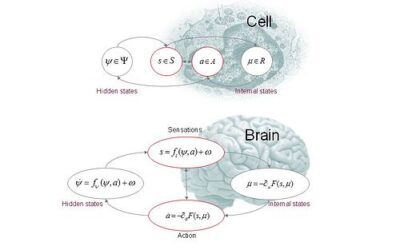
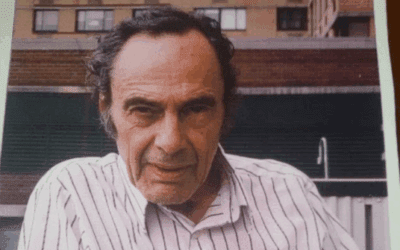
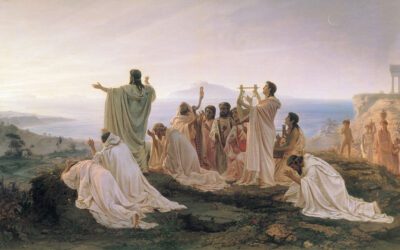
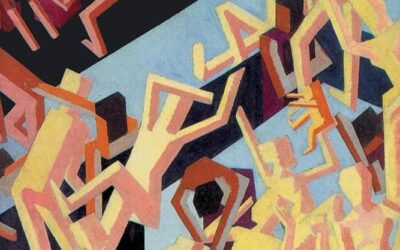
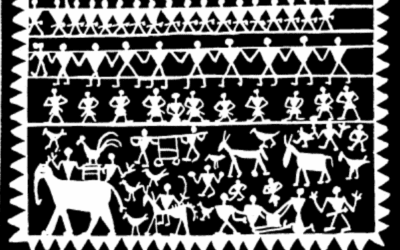

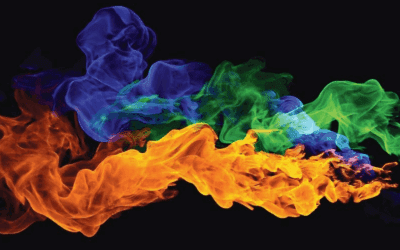
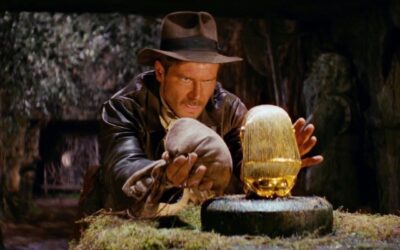
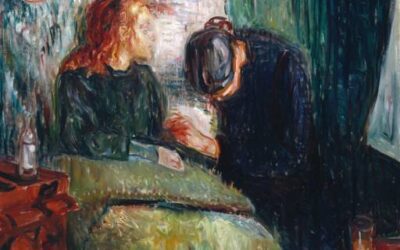
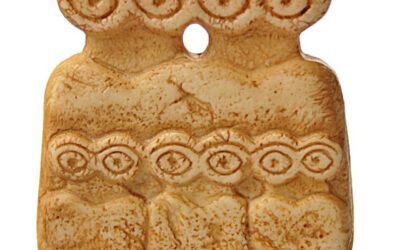
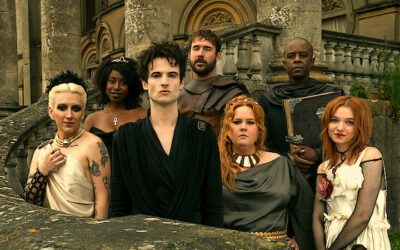
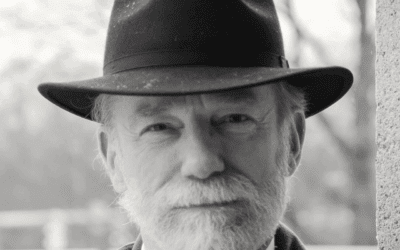
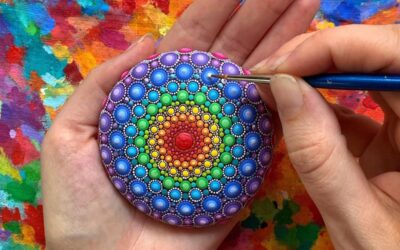
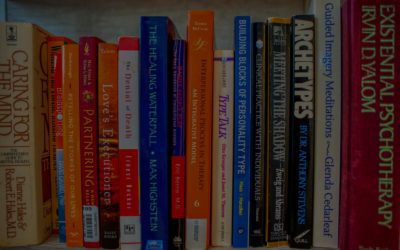

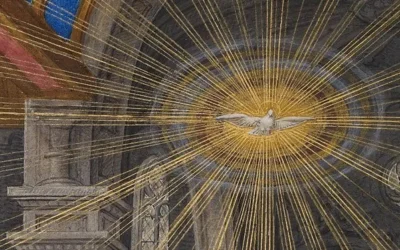

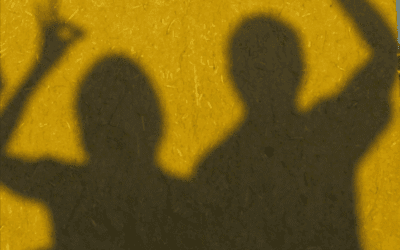
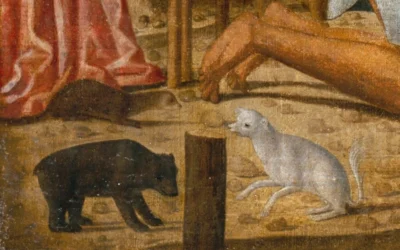
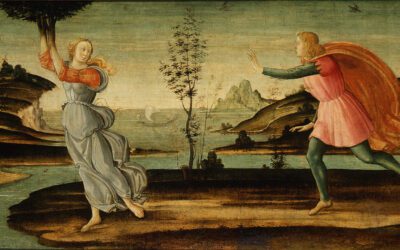
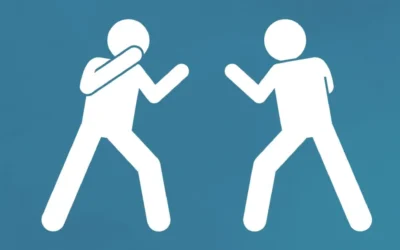
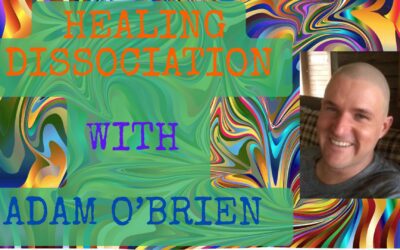
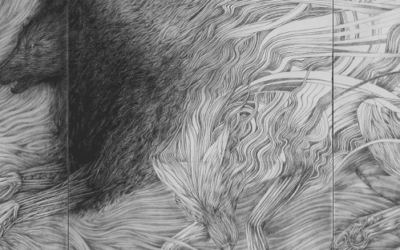
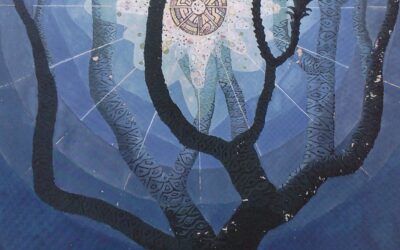
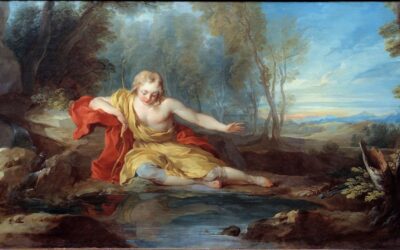
0 Comments